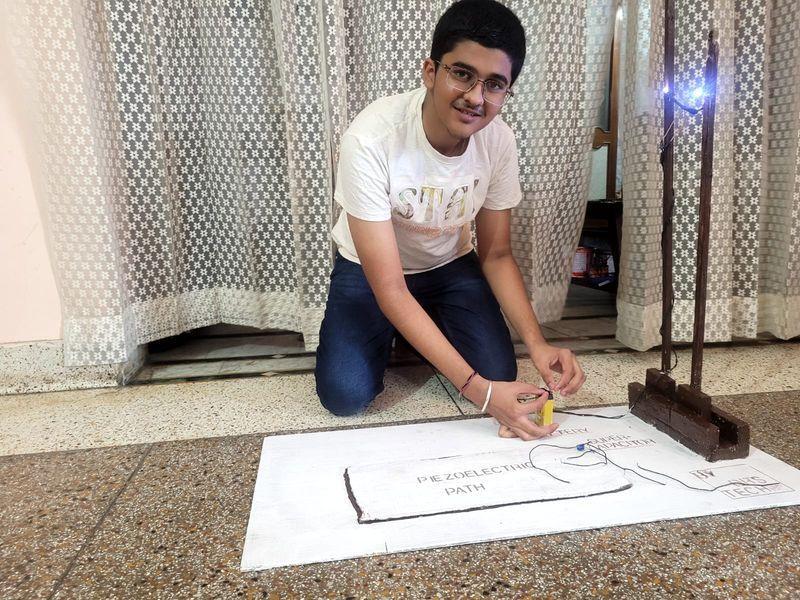
Hoshiarpur Student Builds Device to Generate Power from Footsteps
In a remarkable feat of innovation, a Class 8 student from Hoshiarpur, Punjab, has taken the concept of harnessing renewable energy to a new level by developing a device that generates power from the simplest of human activities – walking. Sanchit, the 14-year-old prodigy, has created a science project called “Power beneath our feet” that uses piezoelectric technology to convert footsteps into electricity.
The device, designed and built by Sanchit, is a small, wearable unit that can be strapped to the ankle or attached to the shoe. It uses piezoelectric materials that generate an electric charge when subjected to mechanical stress, such as pressure or vibrations. When a person walks, the device captures the kinetic energy generated by each step and converts it into electrical energy.
Sanchit’s innovative project has not only caught the attention of local authorities, scientists, and enthusiasts but has also sparked a wave of excitement in the field of renewable energy. The device has the potential to revolutionize the way we think about power generation, offering a sustainable and eco-friendly solution to our energy needs.
According to Sanchit, the idea for the project struck him while watching a documentary on renewable energy. He realized that there were many untapped sources of energy available around us, and he wanted to explore the possibility of harnessing energy from human motion. After conducting extensive research and experimenting with different materials, he finally succeeded in developing a working prototype.
The device is still in its early stages, and Sanchit is working on refining its design and efficiency. However, the initial results are promising, with the device capable of generating enough electricity to power small appliances like mobile phones or LED lights.
Sanchit’s achievement has not gone unnoticed. The district administration and local scientists have taken notice of his innovative project, and he has been invited to present his device at several events and conferences. The Punjab Government’s Department of Science, Technology, and Environment has also shown interest in his project and is considering providing financial support to further develop and commercialize the technology.
The potential applications of Sanchit’s device are vast and varied. In rural areas, where access to electricity is limited, this device could be used to power small-scale irrigation systems, lighting, or communication devices. In urban areas, it could be used to charge mobile phones or other electronic devices on-the-go.
Moreover, Sanchit’s project could also have implications for the field of healthcare. The device could be used to monitor patient activity and generate electricity to power medical equipment or sensors, reducing the need for batteries and minimizing the risk of equipment failure.
Sanchit’s achievement is not only a testament to his innovative thinking and technical expertise but also a reflection of the potential of young minds to shape the future of science and technology. As the world grapples with the challenges of climate change, energy scarcity, and sustainability, projects like Sanchit’s serve as a reminder that the solutions to these problems may be closer than we think.
In conclusion, Sanchit’s device is a remarkable example of how innovative thinking and technological advancements can come together to create something truly remarkable. As the world looks to the next generation of scientists, inventors, and innovators to shape its future, Sanchit’s story serves as a beacon of hope and inspiration.
Source:



